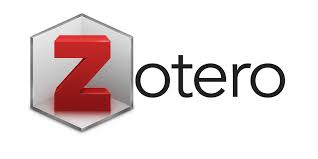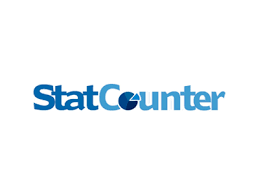Peningkatan Hasil Belajar Siswa SMAN 2 Palembang melalui Model Discovery Learning pada Materi Trigonometri
DOI:
https://doi.org/10.29240/ja.v2i1.1499Keywords:
Discovery Learning, Learning Outcomes, MathematicsAbstract
The research conducted was classroom action research to improve the learning outcomes of students of class XI MIPA 6 Senior High School 2 Palembang. Improved learning outcomes are carried out by using the discovery learning model during the learning process. As for this research, using a subject consisting of 35 students. The subject used by researchers in this study is the formula of the sum and difference of sine, cosine, and tangent of two angles. In the first cycle consisted of 3 meetings and Cycle II consisted of 2 meetings. This study uses instruments in the form of test results of learning and observation. Tests of learning outcomes are used by researchers as a way to find out the achievements of students from each cycle and observations are used by researchers to collect data during the learning process takes place. Quantitative and descriptive data analysis was used in this study. Based on the results of the study, it was found that the average value of students of class XI MIPA 6 on the first cycle test was 63.00 and increased on the second cycle test to 83.69. The results of this study indicate that learning using the discovery learning model can improve students' mathematics learning outcomes, i.e. 74.28% Â of students have achieved indicators of success in the second cycle of research.
Downloads
References
(Kementerian Pendidikan dan Kebudayaan Republik Indonesia). (2013). Implementasi Kurikulum. Permendikbud. https://doi.org/10.1017/ CBO9781107415324.004
Ahmad, H. (2016). PENINGKATAN KEMAMPUAN PENALARAN MATEMATIKA MATERI TRIGONOMETRI MELALUI PENERAPAN MODEL PEMBELAJARAN DISCOVERY LEARNING DENGAN PENDEKATAN SAINTIFIK PADA KELAS X SMA NEGERI 11 MAKASSAR. Jurnal Daya Matematis. https://doi.org/10.26858/jds.v3i3.1697
Arikunto, S. (2006). Prosedur Penelitian Tindakan Kelas. Bumi Aksara
Bruner, M. K., Hilgers, K. K., Silveira, A. M., & Butters, J. M. (2005). Graduate orthodontic education: The residents’ perspective. American Journal of Orthodontics and Dentofacial Orthopedics. https://doi.org/10.1016/j.ajodo.2005.04.031
Fitriyah, F., Murtadlo, A., & Warti, R. (2017). Pengaruh Model Pembelajaran Discovery Learning terhadap Hasil Belajar Matematika Siswa MAN Model Kota Jambi. Jurnal Pelangi. https://doi.org/10.22202/jp.2017.v9i2.1898
Mawaddah, S., & Maryanti, R. (2016). Kemampuan Pemahaman Konsep Matematis Siswa SMP dalam Pembelajaran Menggunakan Model Penemuan Terbimbing (Discovery Learning). EDU-MAT: Jurnal Pendidikan Matematika. https://doi.org/10.20527/edumat.v4i1.2292
Oktaviani, W., Kristin, F., & Anugraheni, I. (2018). PENERAPAN MODEL PEMBELAJARAN DISCOVERY LEARNING UNTUK MENINGKATKAN KEMAMPUAN BERPIKIR KRITIS DAN HASIL BELAJAR MATEMATIKA SISWA KELAS 5 SD. Jurnal Basicedu. https://doi.org/10.31004/basicedu.v2i2.41
Tukaryanto, Hendikawati, P., & Nugroho, S. (2018). Peningkatan Kemampuan Penalaran Matematik dan Percaya Diri Siswa Kelas X Melalui Model Discovery Learning. PRISMA, Prosiding Seminar Nasional Matematika
Wahyudi, W., & Siswanti, M. C. (2015). PENGARUH PENDEKATAN SAINTIFIK MELALUI MODEL DISCOVERY LEARNING DENGAN PERMAINAN TERHADAP HASIL BELAJAR MATEMATIKA SISWA KELAS 5 SD. Scholaria : Jurnal Pendidikan Dan Kebudayaan. https://doi.org/10.24246/j.scholaria.2015.v5.i3.p23-36
Yulandari, T. I. (2012). Pengembangan Lembar Kerja Siswa Materi Trigonometri untuk Siswa SMA Kelas X dengan Metode Penemuan Terbimbing. Jurnal Online Universitas Negeri Malang, 1(2)
Downloads
Published
Issue
Section
Citation Check
License
Authors who publish with ARITHMETIC: Academic Journal of Math agree to the following terms:
- Authors retain copyright and grant the journal right of first publication with the work simultaneously licensed under a Creative Commons Attribution-NonCommercial-ShareAlike 4.0 International License (CC BY-NC-SA 4.0) that allows others to share the work with an acknowledgment of the work's authorship and initial publication in this journal.
- Authors are able to enter into separate, additional contractual arrangements for the non-exclusive distribution of the journal's published version of the work (e.g., post it to an institutional repository or publish it in a book), with an acknowledgment of its initial publication in this journal.
- Authors are permitted and encouraged to post their work online (e.g., in institutional repositories or on their website) prior to and during the submission process, as it can lead to productive exchanges, as well as earlier and greater citation of published work (See The Effect of Open Access).







